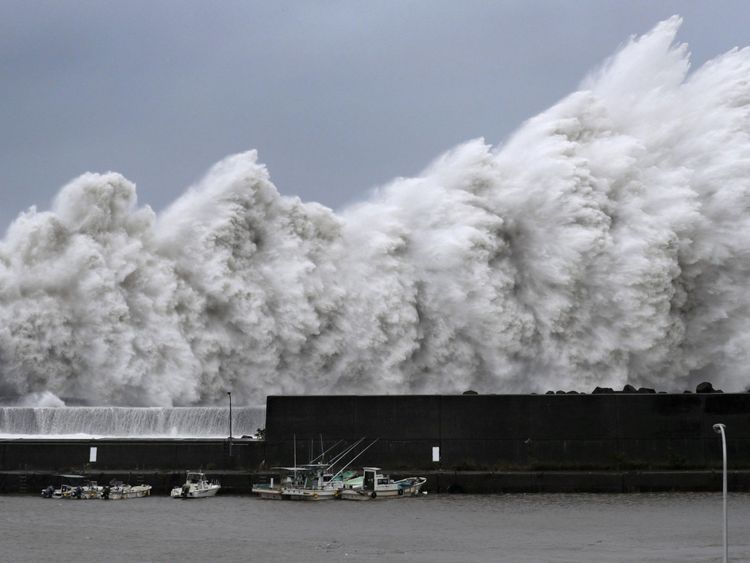At least 10 people have reportedly died after Japan was hit by its strongest typhoon in 25 years.
More than one million people have been urged to evacuate their homes as Typhoon Jebi brought winds of up to 135mph to parts of the country.
Tens of thousands of buildings have been left without power, with more than 700 flights cancelled along with scores of train and ferry services.
Japan’s weather agency warned of possible landslides, flooding, high tides, lightning and tornadoes across a swathe of the country.
Japanese media said 10 people have died in the severe weather, while more than 200 people have reportedly been injured.
A man in his 70s was killed after apparently being blown to the ground from his apartment in Osaka prefecture.
Meanwhile, a 71-year-old man died after being buried underneath a storage unit that collapsed on him.
Evacuation advisories were issued for 1.19 million people in western and central Japan, with another 16,000 people issued with stronger but non-mandatory evacuation orders.
A tanker anchored in Osaka Bay was swept into a bridge and Kansai international airport has been closed after the runway was flooded by high waves whipped up by the storm.
Although the runway has now been cleared, officials were not able to say when the airport would reopen.
Universal Studios Japan in Osaka shut down along with factories for several large manufacturers, including car maker Toyota.
Parts of a train station roof also collapsed in Kyoto following the stormy weather.
Weather forecaster Ryuta Kurora described the typhoon as “very strong”, adding: “This is (the strongest) since 1993.”
As the storm approached, Japanese Prime Minister Shinzo Abe called a disaster response meeting and cancelled a trip to Kyushu, the country’s southernmost main island.
“I urge the Japanese people to take action to protect your lives, including preparing and evacuating early,” he said.
He also instructed his cabinet to “take all measures possible”.
Jebi has a similar trajectory to Typhoon Cimaron which made landfall on 23 August, disrupting transport but causing limited damage and few injuries.
Some of the areas affected are still recovering from devastating record rains that killed at least 200 people over the summer.
The flooding and landslides proved so deadly in part because many people did not heed evacuation warnings, which are not mandatory.
Since the disaster, authorities have urged people to take the warnings more seriously and prepare to leave home immediately when they are issued.
From – SkyNews


